
Stephen III, commonly known as Stephen the Great ; died on 2 July 1504), was Voivode of Moldavia from 1457 to 1504. He was the son of and co-ruler with Bogdan II, who was murdered in 1451 in a conspiracy organized by his brother and Stephen's uncle Peter III Aaron, who took the throne. Stephen fled to Hungary, and later to Wallachia; with the support of Vlad III Țepeș, Voivode of Wallachia, he returned to Moldavia, forcing Aaron to seek refuge in Poland in the summer of 1457. Teoctist I, Metropolitan of Moldavia, anointed Stephen prince. He attacked Poland and prevented Casimir IV Jagiellon, King of Poland, from supporting Peter Aaron, but eventually acknowledged Casimir's suzerainty in 1459.

Bran Castle is a castle in Bran, 25 kilometres (16 mi) southwest of Brașov. The castle was built by Saxons in 1377 who were given the privilege by Louis I of Hungary. It is a national monument and landmark in Transylvania. The fortress is on the Transylvanian side of the historical border with Wallachia, on road DN73.

Vlad II, also known as Vlad Dracul or Vlad the Dragon, was Voivode of Wallachia from 1436 to 1442, and again from 1443 to 1447. He is internationally known as the father of Vlad the Impaler, or Dracula. Born an illegitimate son of Mircea I of Wallachia, he spent his youth at the court of Sigismund of Luxembourg, who made him a member of the Order of the Dragon in 1431. Sigismund also recognized him as the lawful Voivode of Wallachia, allowing him to settle in nearby Transylvania. Vlad could not assert his claim during the life of his half-brother, Alexander I Aldea, who acknowledged the suzerainty of the Ottoman Sultan, Murad II.

Vlad III, commonly known as Vlad the Impaler or Vlad Dracula, was Voivode of Wallachia three times between 1448 and his death in 1476/77. He is often considered one of the most important rulers in Wallachian history and a national hero of Romania.
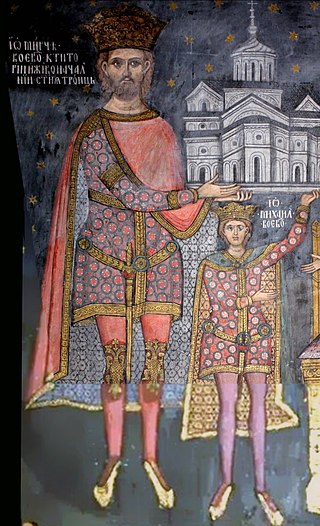
Michael I, was Voivode of Wallachia from 1415 to 1420. He was the only legitimate son of Mircea I of Wallachia, who made him his co-ruler. Styled as prince from 1415, Michael became sole ruler after his father died in early 1418. His support for a Hungarian campaign against the Ottoman Empire caused the Ottoman Sultan, Mehmed I, to invade Wallachia, forcing him to agree to pay tribute. After Michael failed to respect the treaty, the Ottomans gave assistance to his rival, Dan, who crossed into Wallachia in 1420. Dan and his Ottoman allies defeated the Wallachian army, and Michael was killed on the battlefield.

Dan II cel Viteaz was a voivode of the principality of Wallachia, ruling an extraordinary five times, and succeeded four times by Radu II Chelul, his rival for the throne. Of those five periods on the throne of Wallachia, four were within a period of only seven years.
Mircea II (1428–1447) was the Voivode, or prince, of Wallachia in 1442. He was the oldest son of Vlad II Dracul and brother of Vlad Țepeș and Radu the Handsome. He was the grandson of his namesake Mircea cel Bătrân.
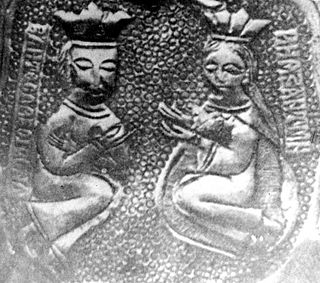
Vladislav II was a voivode of the principality of Wallachia, from 1447 to 1448, and again from 1448 to 1456. The way Vladislav II came to the throne is debatable. The most accepted view is that Vladislav assassinated Vlad II Dracul, ruler of Wallachia, and was subsequently placed on the throne by John Hunyadi, on the other, Vladislav II was helped by the Ottomans to replace Dan III which was assigned by the Hungarians.
Basarab IV cel Tânăr, also known as Țepeluș, son of Basarab II, and grandson of Dan II (1422-1431) was 4 times the voivode of the principality of Wallachia between 1474 and 1482: from Oct to Dec 1474, from Jan 1478 to June 1480, from Nov 1480 to before July 1481, and again from Aug 1481 to July 1482.

Vlad IV Călugărul was the Prince of Wallachia in 1481 and then from 1482 to 1495.
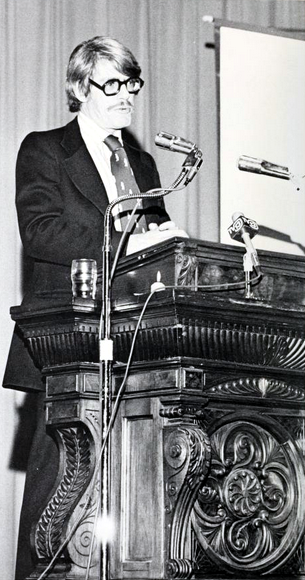
Radu Florescu was a Romanian academic who held the position of Emeritus Professor of History at Boston College. His work on Vlad Dracula includes a series of bestselling books that he co-authored with his colleague Raymond T. McNally. Along with serving as Director of the East European Research Center at Boston College, Florescu was also a philanthropist and an adviser to Edward Kennedy on Balkan and Eastern European affairs. At the time of his death, Radu Florescu was considered the patriarch of the Florescu family.

The night attack at Târgoviște was a battle fought between forces of Prince Vlad III of Wallachia, and Sultan Mehmed II of the Ottoman Empire on Thursday, 17 June 1462. The battle started after Mehmed II, who already had tense relations with Vlad, discovered his alliance with Hungary's king Matthias Corvinus and ordered his forces to ambush him. Vlad foiled the attack and invaded Bulgaria. In response, Mehmed raised a great army with the objective to conquer Wallachia. The two leaders fought a series of skirmishes, the most notable one being the conflict where Vlad attacked the Turkish camp in the night in an attempt to kill Mehmed. The assassination attempt failed and Mehmed marched to the Wallachian capital of Târgoviște, where he found a few men with cannons. After leaving the capital, Mehmed discovered 23,844 impaled Turks whom Vlad had killed during his invasion of Bulgaria. The number is mentioned by Vlad himself in a letter to Matthias Corvinus. The sultan and his troops then sailed to Brăila and burned it to the ground before retreating to Adrianople. Mehmed's forces returned home with many captured slaves, horses, and cattle.

Mircea III Dracul was one of the two sons of Mihnea cel Rău, making him the grandson of Vlad Dracula. He ruled as prince of Wallachia between 12 October 1509 and 26 January 1510.
The House of Drăculești were one of two major rival lines of Wallachian voivodes of the House of Basarab, the other being the House of Dănești. These lines were in constant contest for the throne from the late fourteenth to the early sixteenth centuries. Descendants of the line of Drăculești would eventually come to dominate the principality, until its common rule with Transylvania and Moldavia by Mihai Viteazul in 1600.
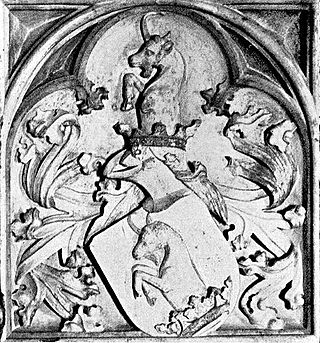
Justina Szilágyi de Horogszeg was a Hungarian noblewoman, who became the second wife of Vlad Dracula, Voivode of Wallachia. She was the daughter of Ladislaus or Osvát Szilágyi and thus a cousin of Matthias Corvinus, King of Hungary. Corvinus first gave her in marriage to Wenceslas Pongrác of Szentmiklós. Pongrác had inherited estates in Upper Hungary, but was forced to renounce them in exchange for landed property he and Justina jointly received in Transylvania following their marriage. After Pongrác died in 1474, the widowed Justina married Vlad, whom Corvinus acknowledged as the lawful voivode of Wallachia in 1475. Vlad seized Wallachia in late 1476, but soon died in battle. To strengthen her claim to her Transylvanian estates, she married Paul Suki, who was related to the former owners of those territories. After the death of Suki, in 1479, Justina was married to John Erdélyi of Somkerék, until her death in 1497.

The Szilágyi of Horogszeg was an important Hungarian noble family of the Kingdom of Hungary and of Transylvania.
Vlad Țepeș is a 1979 Romanian historical drama film directed by Doru Năstase. The film recounts the story of Vlad the Impaler, the mid-15th century Voivode of Wallachia, and his fights with the Ottoman Turks on the battlefield and with the Boyars in his court.

Maria Tolmay or Mara was the wife of Mircea I of Wallachia. She was the mother of his only legitimate son and co-ruler, Michael. She was born to an unidentified Hungarian noble family and owned present-day Lesencetomaj at Lake Balaton in the Kingdom of Hungary in the early 15th century.
Alexăndrel or Alexandru II, son of Iliaș of Moldavia, was the prince of Moldavia in 1449, from 1452 to 1454, and in 1455.
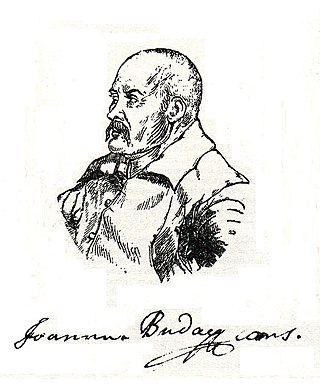
Ion Budai-Deleanu was a Romanian scholar, philologist, historian, poet, and a representative of the Transylvanian School.















